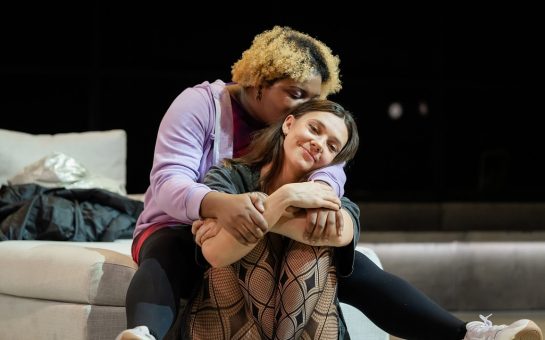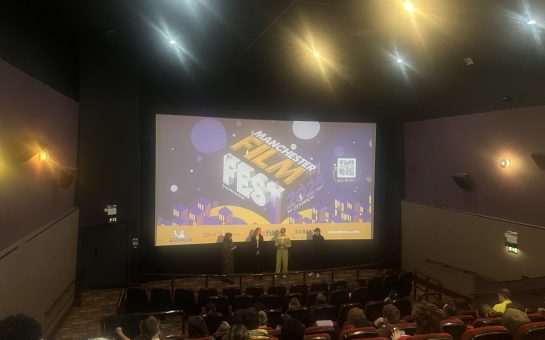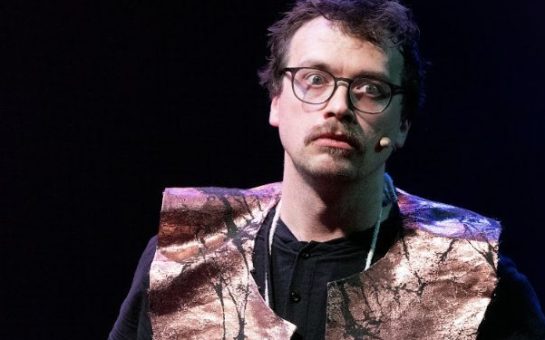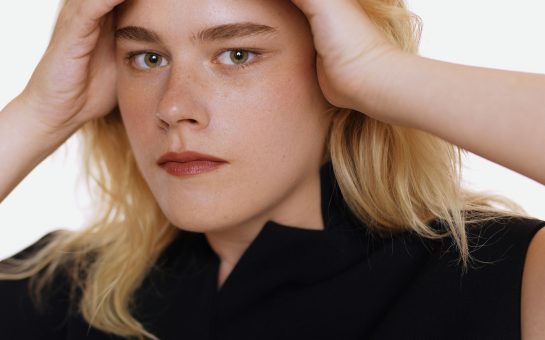Quentin Tarantino’s greatest strength, and biggest problem, is that he never lets anyone forget that he’s Quentin Tarantino.
The controversial auteur’s identity is emblazoned in his latest film.
The title, like Federico Fellini’s 8½, is a reference to the director’s number of previous films.
The Hateful Eight is Tarantino’s eight feature film, and the style and preoccupations, as well as some of the recurring actors, that have filled his filmography since 1992’s Reservoir Dogs are more inescapable than ever.
At the same time, the director’s been an inescapable feature of the headlines thanks to a string of controversies – his criticism of ‘arty movies’, the refusal of three UK cinema chains to screen The Hateful Eight in a dispute over the film’s premiere, his attack on police brutality in America.
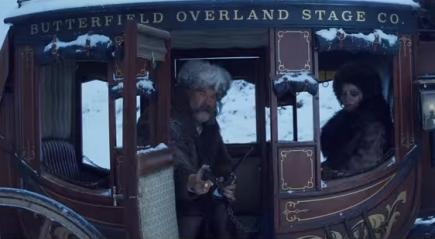
THE HANGMAN AND THE HANGED: Russel, Leigh and their stagecoach
All this means that the actual film is as laden with ominous baggage as the stagecoaches that trundle through the story.
The film opens with one of these trying to outrun a blizzard in the Wyoming wilderness some time after the end of the American Civil War and the Lincoln assassination.
Major Marquis Warren (Samuel L. Jackson), a Union veteran with a yellow stripe of cowardice down his back and a pile of bodies, flags down the driver O. B. Jackson (James Parks).
Warren is a bounty hunter, and the bodies are criminals that he lawfully killed and wants to claim bounty money on.
So, it turns out, is the stagecoach passenger John Ruth (Kurt Russell) – only his target, Daisy Domergue (Jennifer Jason Leigh), is still alive, handcuffed to him and with a black eye from his habit of punching her every time she insults him, which is often.
Given that Ruth is transporting Domergue back to Red Rock to hang for murder, this is perhaps understandable.
Ruth recognises Marquis and agrees to give him a lift out of the snowy wilderness, but they are both more suspicious of Chris Mannix (Walton Goggins), a wide-eyed, southern boy who’s also stranded in the wilderness and claims to be the new sheriff of Red Rock.
They make it to Minnie’s Haberdashery – really a bar and the only shelter for miles – where they are trapped by the blizzard with the motley collection of characters already there.
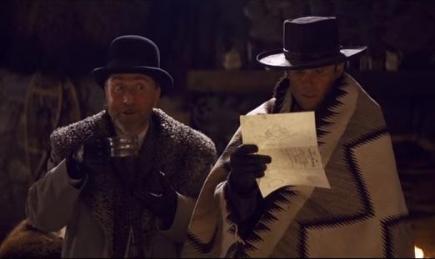
ONE QUARTER OF EIGHT: Roth and Parks in character
They include Bob (Demian Bichir), a taciturn Mexican, Joe Gage (Michael Madsen), Oswaldo Mobray (Tim Roth), a plummy-voiced Englishman who claims to be the town’s new hangman, and General Sandy Smithers (Bruce Dern), a former Confederate who claims to be a war hero.
The title is somewhat awkward since there are technically nine people – although the final character is introduced via a plot twist not worth spoiling.
The tension caused by Ruth’s paranoia that someone is planning to spring his prisoner and the raw legacy of the Civil War between Warren, Mannix and Smithers is made worse by the bleak weather.
Differing alliances rapidly form and are broken and soon secrets are uncovered.
The Hateful Eight harks back to Tarantino’s earlier work.
The confined space and suspicion about a traitor in their midst recalls Reservoir Dogs’ depiction of a heist gone wrong.
Ruth and Warren’s laid-back conversations as they go about their bloody business echo Jackson and John Travolta bantering about foot massages and the ‘royale with cheese’ before carrying out a hit in Pulp Fiction.
But while his direction is as assured as ever, the film still comes short compared to other Tarantino films that did more with less.
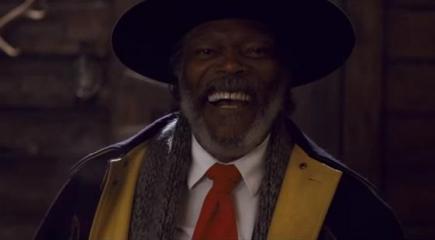
THE MAJOR: Samuel L Jackson is a veteran of Tarantino’s movies
The Hateful Eight also continues the filmmaker’s interest in stylised Western pastiches shown in his previous film Django Unchained.
But while that film was ultimately a triumphant depiction of Jamie Foxx’s slave-turned-bounty-hunter wreaking righteous vengeance, The Hateful Eight is bleaker and more uneasy.
The Civil War is over and slavery is ended, but the film still shows America in the process of forming as a country where all men are created far from equal, and where justice is quick and brutal if it comes at all.
It’s possibly Tarantino’s bleakest film.
His love of violence is taken to new extremes – from an uneasily quasi-comic rape scene to a close-up of someone being shot in the face.
All the characters are monstrously amoral, with no real difference between those designated criminals and those mean to enforce the law.
With Barack Obama’s admission that after seven years as President he is leaving America more divided than ever, it’s hard not to hear the contemporary resonances in the film, especially since Tarantino is making them as loud as he possibly can.
Americans, he’s saying, have been having arguments about race, money, justice and guns since the country was born, and those arguments usually end with someone reaching for the guns.
However, The Hateful Eight is straining so hard to be both Tarantino’s masterpiece and an important piece of topical satire that it nearly collapses under the weight of its own self-importance.
Tarantino’s films have always stood out for their love of wordy, blackly-comic dialogue, but in a two and a half hour film the dialogue scenes stretch out forever, and they aren’t always as riveting as his best.
One character actually uses the ‘when you get to Hell, tell ‘em X sent you’ cliché, and a re-usage of a tagline for a previous Tarantino’s film (‘a bastard’s work is never done’) is groan-inducing.
The film drags in places, including a lengthy flashback sequence that could have been cut altogether.
Nevertheless, many of the scenes are entertaining, and the film’s so visually rich that they’re always a pleasure to watch.
Its evocation of frontier America is beautifully detailed, and the cinematography is assured, from opening shots of bleak landscapes where the only movement is the snow and crows, to the edgy, unsettlingly edited close-ups used to introduce characters, contributing to the air of unease.
The cast are riveting too.
As usual with Tarantino, all the actors are unexpected but perfect casting choices and they’re each given a chance to shine in bringing their worn and savage characters to life.
Ultimately, The Hateful Eight is brilliant in places, frustrating and boring in others.
But at least this time Tarantino does us all a favour and foregoes one of his famously terrible acting cameos.
Images courtesy of The Weinstein Company, via Youtube, with thanks
